In the rapidly evolving digital environment, maintaining high-quality software is more critical than ever. Traditional testing methods, while effective, often struggle to keep up with the demands of rapid development cycles. Enter AI-driven testing, an innovative approach that revolutionizes the way we test software, offering unprecedented efficiency, accuracy, and scalability. 🌟 Whether it's automating repetitive tasks, identifying hidden bugs, or optimizing test coverage, AI is transforming the testing process into a seamless, powerful engine for quality assurance. Let's explore how AI is reshaping the future of software testing! 💡

The Role of AI in Modern Quality Engineering
Artificial Intelligence (AI) has become a game-changer in the realm of quality engineering, revolutionizing how we ensure software quality across the development lifecycle. Traditionally, quality assurance (QA) teams relied heavily on manual testing, which, while thorough, was time-consuming, prone to human error, and challenging to scale. Today, AI is redefining these processes by introducing automation, intelligence, and agility into quality engineering.

- Automation of Repetitive Tasks 🔄
AI-powered test automation has significantly transformed current processes by automating repetitive tasks. Test case generation, execution, and even defect tracking are now handled by AI-driven tools. This shift towards automation testing not only speeds up the process but also ensures consistency and accuracy, reducing the likelihood of human errors.
- Intelligent Test Case Prioritization 🎯
AI can analyze vast amounts of data to prioritize test cases based on risk, code changes, and historical data. This intelligent approach to test case prioritization ensures that the most critical areas of the application are tested first, improving test efficiency and coverage. As a result, QA teams can focus on high-risk areas, leading to early detection of issues and a more comprehensive approach to testing.
- Predictive Analytics for Defect Detection 🔍
AI's ability to predict potential defects before they occur is a key advancement. By leveraging deep learning models and analyzing historical data, code patterns, and user behavior, AI can identify areas of the application more likely to contain defects. This predictive approach allows QA teams to address high-risk areas proactively, reducing the overall cost of quality and enhancing test accuracy.
- Enhanced Test Coverage and Accuracy ✅
AI-driven tests are capable of generating test cases that cover a wide range of scenarios, including edge cases that might be overlooked in manual testing. This ensures comprehensive test coverage, reducing the risk of undetected bugs. Moreover, AI's precision in executing functional and non-functional tests leads to more accurate results, providing greater confidence in the software's quality.
Why AI is Essential for Scalable Testing in Agile Environments
In Agile environments, where development cycles are short and changes are frequent, maintaining high-quality software can be challenging. Traditional testing methods often struggle to keep pace, especially when it comes to scaling across multiple sprints and teams. This is where AI proves to be indispensable, offering the speed, scalability, and adaptability needed to thrive in Agile settings.
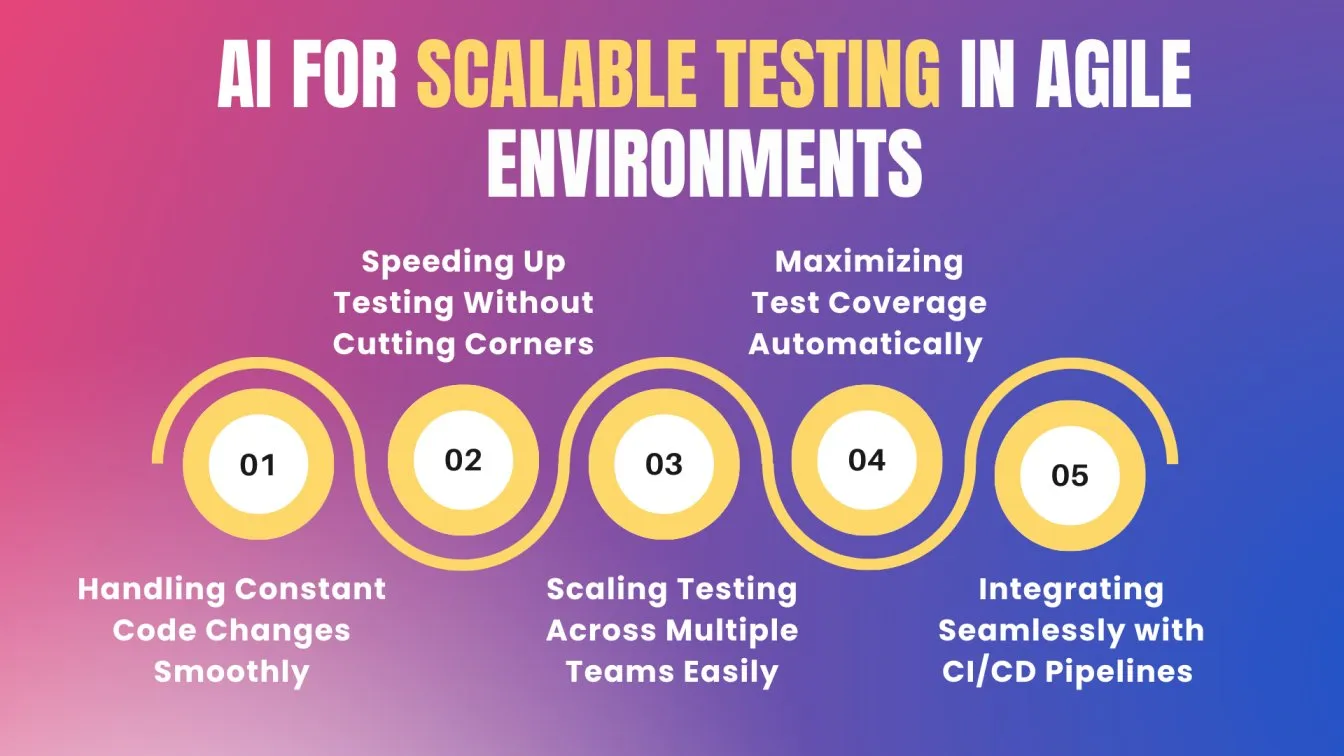
1. Handling Constant Code Changes Smoothly 🔄

AI keeps tests up-to-date as code changes happen.
In Agile, code changes frequently with every new feature, bug fix, or improvement. AI-driven testing tools adapt to these changes automatically, updating test cases in real-time. This ensures that the tests always cover the right areas, reducing the chances of bugs slipping through even in a rapidly evolving codebase.
2. Speeding Up Testing Without Cutting Corners ⚡
AI automates tests at a speed manual efforts can’t match.
Agile development requires fast feedback. Manual testing often becomes a bottleneck. AI accelerates testing by automating tasks like regression and performance tests, running them faster and more efficiently. This means you can release updates quicker without sacrificing the quality of the software.
3. Scaling Testing Across Multiple Teams Easily 🌐
AI ensures consistent testing standards across distributed teams.
As Agile teams work across different projects and locations, ensuring uniform testing becomes a challenge. AI tools standardize the testing process, making it easy to scale across teams and environments. Every team benefits from the same high-quality testing, no matter how many teams or projects are running simultaneously.
4. Maximizing Test Coverage Automatically 🌍
AI adjusts test coverage to focus on the most important areas.
In Agile, new features are constantly being added, and risks shift quickly. AI can prioritize testing for the most critical and frequently changing parts of the software. This ensures that even as the code grows, the most vulnerable areas get the attention they need, leading to better, smarter test coverage.
5. Integrating Seamlessly with CI/CD Pipelines ⏱️
AI automates testing in continuous integration and delivery pipelines.
Continuous integration and delivery (CI/CD) are key to Agile success. AI fits perfectly into these pipelines by automating tests every time code is pushed. This means immediate feedback on code quality, catching issues early, and enabling smoother, faster deployments.
AI-Driven Testing: Maximizing Efficiency and Accuracy
AI-driven testing solutions have revolutionized the approach to testing, offering unprecedented efficiency and effectiveness. By integrating AI-powered testing tools into your development workflow, you can harness the full potential of advanced test automation to achieve higher-quality software releases. Here’s how AI-driven testing can maximize efficiency:
1. Intelligent Test Case Prioritization 🎯
Employs predictive analytics and data-driven algorithms to prioritize test cases based on the scope of changes and risk factors. This focused approach ensures that only the most critical tests are executed, saving time and reducing resource expenditure.
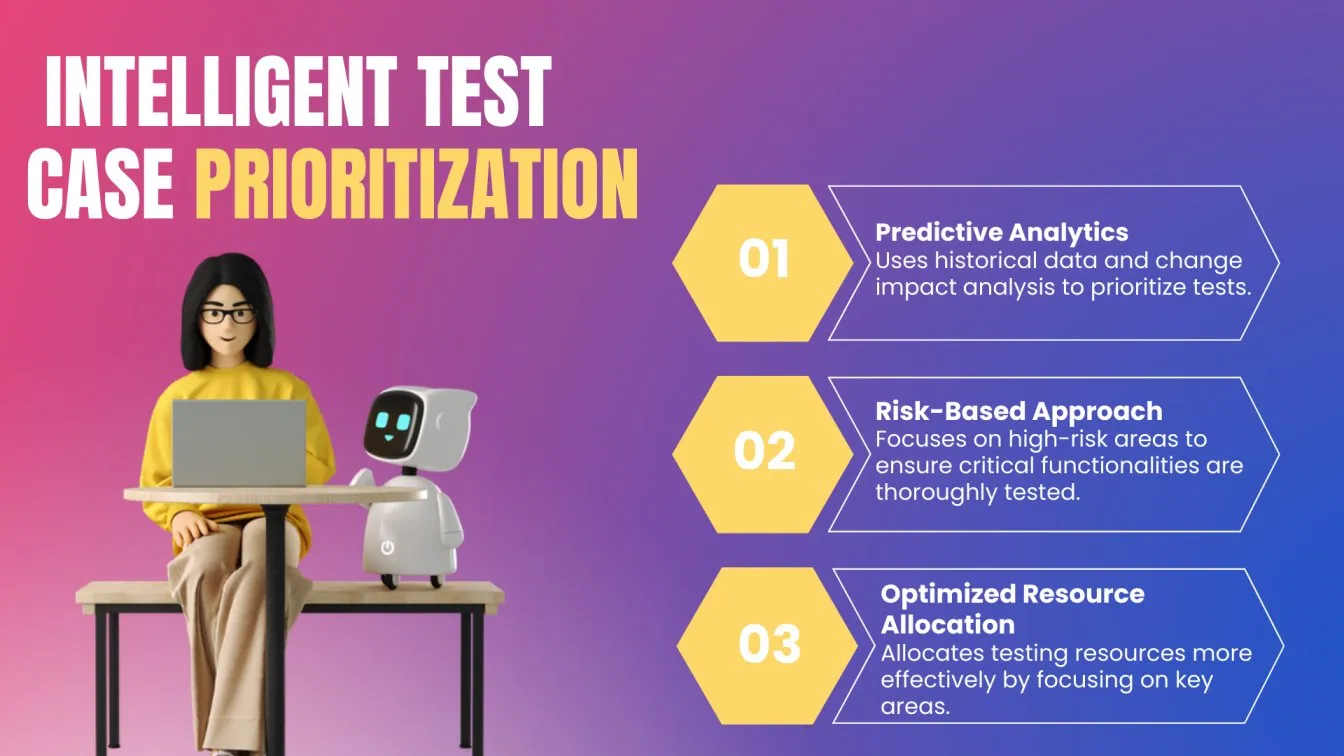
2. Automated Test Case Selection 🤖
Utilizes machine learning to automatically select relevant test cases, minimizing manual effort and reducing the risk of human error. This automation enhances testing accuracy and ensures that the most pertinent tests are conducted.

3. Self-Healing Test Scripts 🔄
Employs self-healing capabilities that automatically adapt test scripts to changes in the application. This reduces the need for manual script maintenance and ensures that tests remain effective as the software evolves.
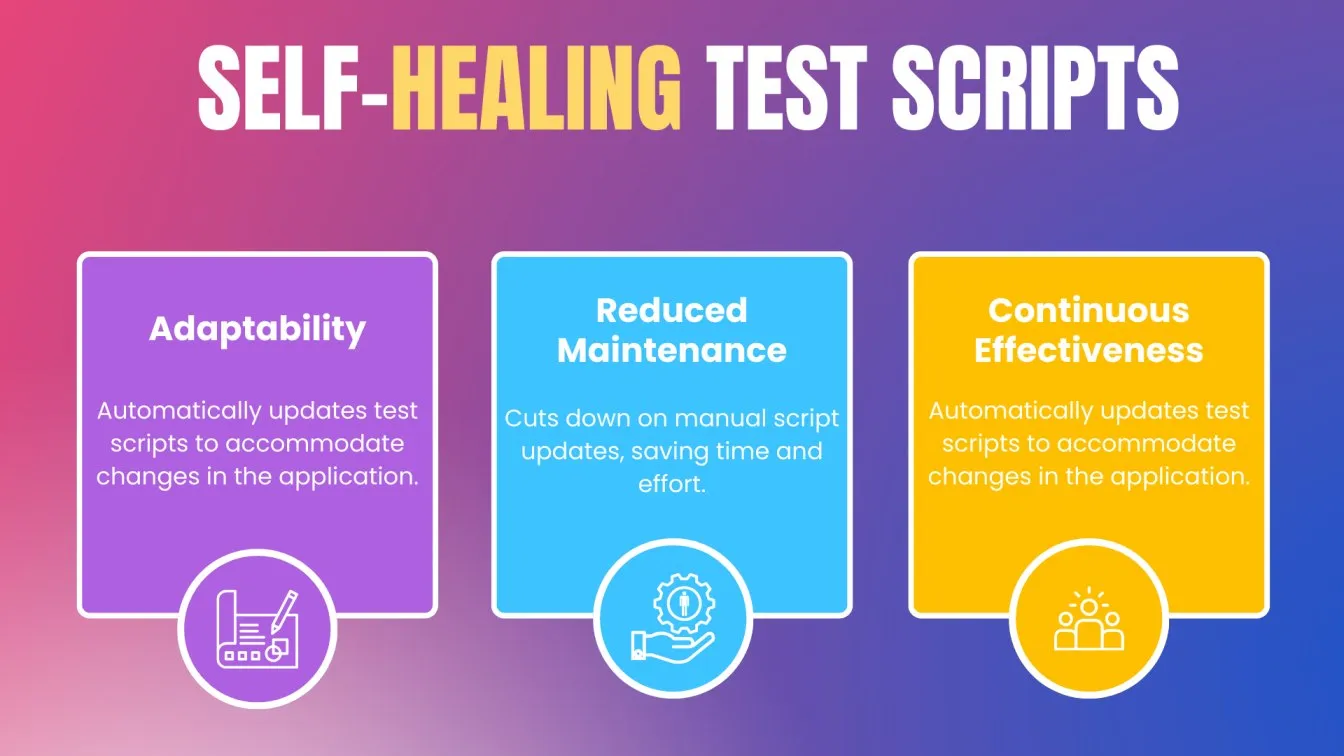
4. Early Bug Detection 🕵️♂️
Uses predictive testing to identify potential bugs early in the development cycle. By catching issues before they escalate, AI-driven testing reduces the cost and effort of bug fixing, leading to more reliable and higher-quality software releases.
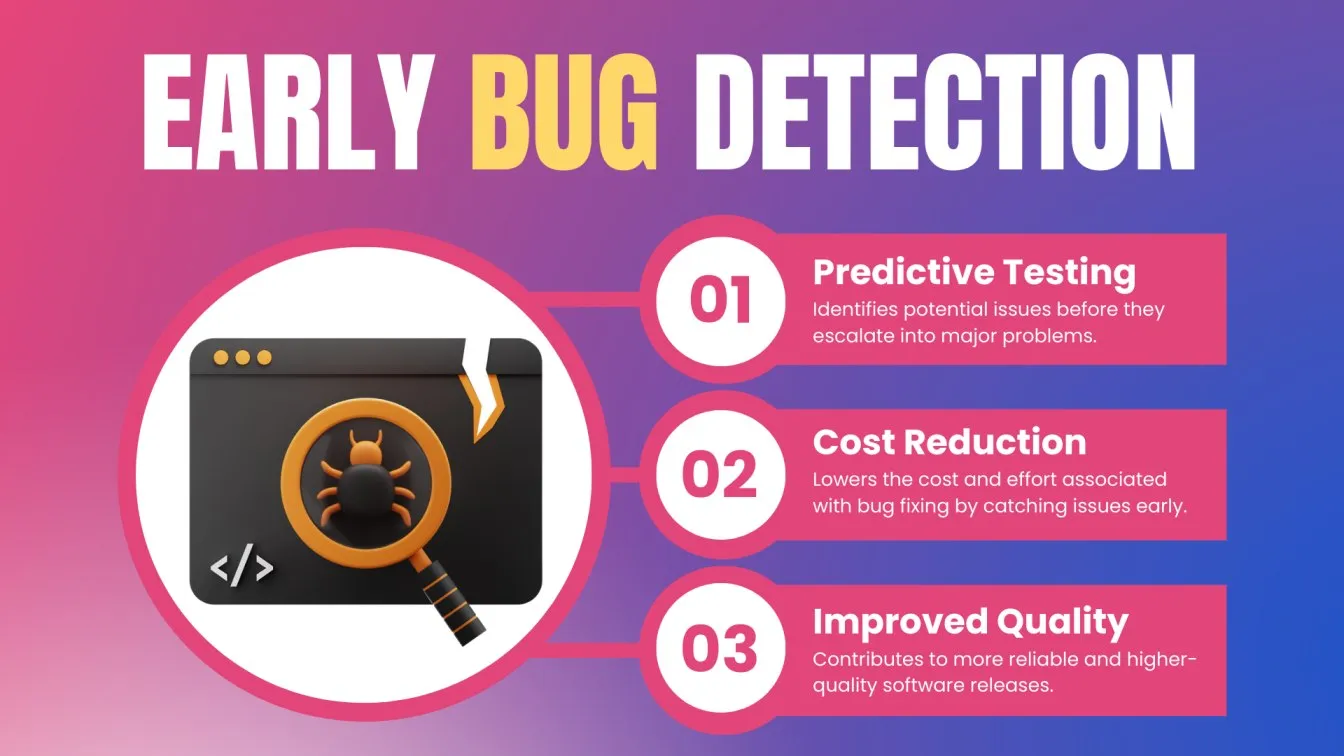
AI-Powered QA: Achieving Unmatched Precision and Efficiency
AI is revolutionizing Quality Assurance (QA) by enhancing precision and efficiency. Here’s how AI-powered testing tools achieve unmatched accuracy:

- Advanced Test Automation 🤖
- AI-driven tools automate complex testing tasks, ensuring consistent and accurate execution while adapting to application changes.
- Predictive Analytics for Early Bug Detection 🕵️♂️
- AI analyzes historical data to predict potential bugs early, allowing for proactive fixes and reducing costly errors.
- AI-Driven Test Case Prioritization 🎯
- AI prioritizes test cases based on impact, focusing on critical areas to optimize resource allocation and improve testing precision.
- Self-Healing Test Scripts 🔄
- AI-powered frameworks automatically update test scripts as applications evolve, maintaining accuracy without manual intervention.
- Enhanced Anomaly Detection 🔍
- AI detects anomalies, including visual defects, with high accuracy, ensuring that all potential issues are identified.
Overcoming Challenges

- Data Quality 📊
Ensure high-quality data and use synthetic data if necessary to maintain testing effectiveness.
- Tool Integration 🔧
Choose tools with robust integration features and address challenges with self-healing automation.
- Learning Curve 📚
Provide comprehensive training and start with simpler tasks to ease the transition.
- Initial Costs 💸
Begin with a pilot project to validate ROI and facilitate smoother implementation.
Integrating AI with Traditional Testing Methods: A Balanced Approach
Combining AI with traditional testing methods creates a superior strategy that benefits from the strengths of both. Here’s how to achieve a balanced approach:
1. Augment Manual Testing with AI 🤖
Use AI to automate repetitive tasks like regression testing, freeing up manual testers for complex scenarios.
2. Enhance Test Case Prioritization 🎯
Employ AI to prioritize test cases based on risk and impact, while using traditional methods for broad coverage.
3. Combine Predictive Analytics with Conventional Testing 📊
Utilize AI for early bug detection and predictive analytics, and validate findings with traditional testing techniques.
4. Integrate AI Tools with Existing Frameworks 🔧
Incorporate AI-driven tools alongside traditional frameworks to cover both automated and manual testing needs.
5. Leverage Continuous Learning 📚
Use AI’s learning capabilities to improve test scripts and processes, while incorporating feedback from traditional methods.
Balancing the Approach
1. Ensure Comprehensive Coverage
Maintain traditional methods for detailed testing where AI might not yet be fully effective.
2. Adopt Gradually
Integrate AI tools in phases to allow teams to adapt and measure effectiveness.
3. Provide Training
Offer training for effective use of both AI tools and traditional methods to enhance overall testing capabilities.
Practical Applications of AI in Quality Assurance
AI is revolutionizing Quality Assurance (QA) with cutting-edge solutions that significantly enhance efficiency, accuracy, and effectiveness. Here are some real-world applications of AI in QA:

1. Automated Test Case Generation 🤖
Application: AI-driven tools automate the creation of test cases based on application code changes and user behavior. This reduces manual effort and ensures comprehensive test coverage. By adapting to evolving software, AI supports continuous integration and delivery (CI/CD) pipelines and improves the efficiency of automated tests.
2. Predictive Analytics for Bug Detection 🕵️♂️
Application: AI leverages predictive analytics to analyze historical data and code patterns, identifying potential bugs before they manifest. This early issue detection reduces the cost and effort of bug fixes, supporting a proactive approach to quality assurance and enhancing overall software quality.
3. Self-Healing Test Scripts 🔄
Application: AI-powered testing frameworks offer automatic test maintenance by adjusting test scripts in response to application changes. This reduces the need for manual script updates and ensures tests remain relevant, minimizing manual errors and maintaining accuracy throughout the testing cycle.
4. Visual Testing and Anomaly Detection 🔍
Application: AI-driven visual testing tools detect visual anomalies and inconsistencies that traditional methods might overlook. By providing detailed insights into user interfaces, these tools ensure consistent rendering across different devices and browsers, enhancing the accuracy of defect detection.
5. Intelligent Test Case Prioritization 🎯
Application: AI algorithms prioritize test cases based on their risk and impact, focusing on the most critical areas. This intelligent test case prioritization optimizes testing efforts by directing resources to the most significant tests first, improving the overall efficiency of the testing process.
6. Performance Monitoring and Optimization 📈
Application: AI tools continuously monitor application performance, analyzing data to identify and resolve bottlenecks. This approach to performance optimization ensures that applications operate smoothly and efficiently, even under varying conditions, providing actionable insights for performance enhancement.
7. Automated Regression Testing 🔁
Application: AI facilitates automated regression testing by re-running previously successful test cases to ensure that new changes do not introduce defects. This automation supports high-quality performance and consistency across multiple releases, reducing the time and effort involved in regression testing.
Key Benefits of Integrating AI into Testing Processes
Integrating AI into testing processes offers numerous advantages that enhance the effectiveness and efficiency of Quality Assurance (QA). Here are the key benefits:

- Increased Efficiency 🤖: AI automates repetitive and time-consuming tasks, such as test case execution and regression testing. This enhances efficiency, accelerates testing cycles, and allows QA teams to focus on more complex test scenarios.
- Enhanced Accuracy 🎯: AI-driven tools use advanced algorithms to reduce human error and improve precision. Predictive analytics and anomaly detection provide actionable insights, helping identify issues more accurately.
- Early Issue Detection 🕵️♂️: AI’s predictive capabilities enable early identification of potential bugs and defects before they become critical, reducing the cost and effort of fixing issues later in the development cycle.
- Self-Healing Test Scripts 🔄: AI-powered frameworks automatically update and adjust test scripts in response to application changes, reducing the need for manual script maintenance and ensuring tests remain relevant.
- Optimized Test Case Prioritization 🎯: AI algorithms prioritize test cases based on risk and impact, ensuring testing efforts are directed where they matter most.
- Comprehensive Test Coverage 📊: AI generates and manages test cases based on application code and user behavior, ensuring extensive test coverage and identifying defects that might be missed with traditional methods.
Challenges and Solutions in AI-Enhanced Testing
Measuring the Impact of AI on Test Coverage and Accuracy
When assessing the influence of AI on test coverage and accuracy, consider the following aspects:
1. Test Coverage
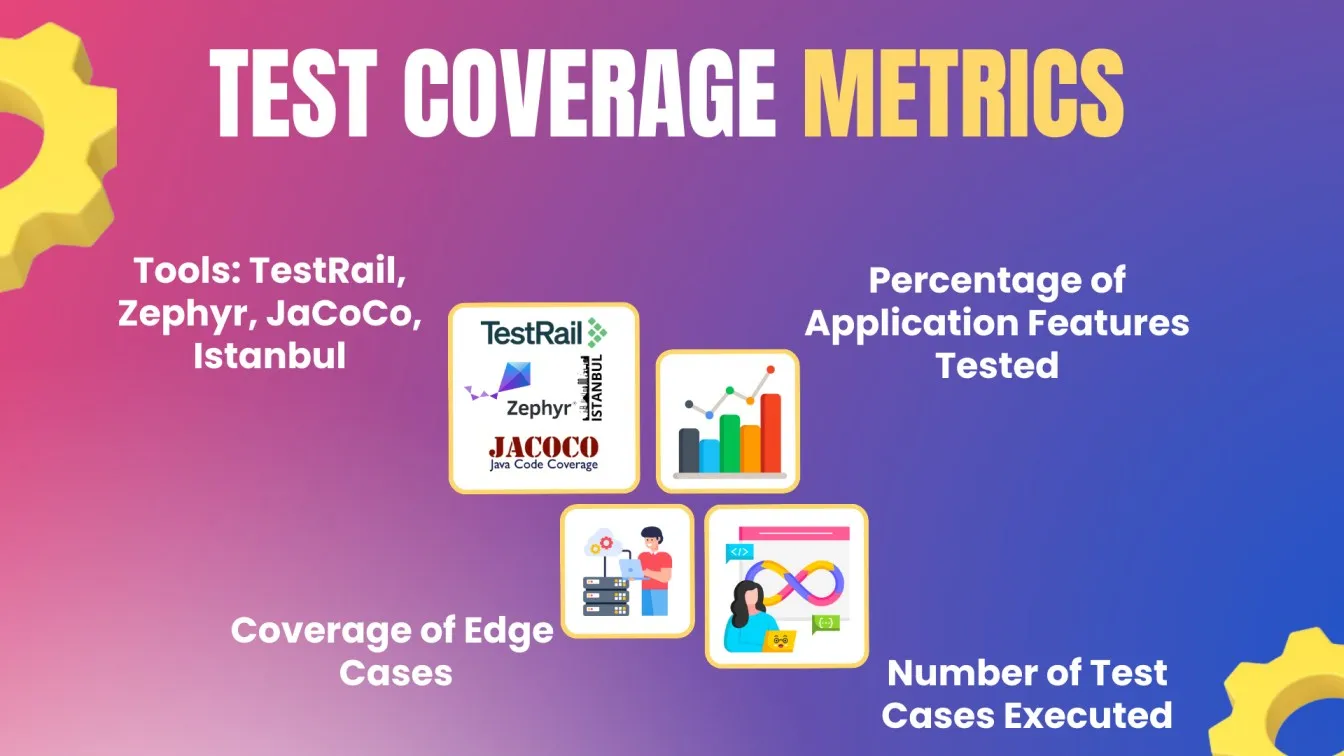
To measure the impact of AI on test coverage, you need to evaluate how comprehensively your AI-driven testing tools are covering various parts of the application. Key metrics include:
- Percentage of Application Features Tested: Determine the proportion of the application’s features that are tested by the AI tools. A higher percentage indicates broader coverage.
- Number of Test Cases Executed: Track how many test cases are executed by AI compared to manual testing. More test cases can lead to better coverage.
- Coverage of Edge Cases: Assess how well AI handles edge cases and uncommon scenarios. This can be done by comparing the test cases that AI generates to those manually created.
Tools such as TestRail, Zephyr, and code coverage tools like JaCoCo and Istanbul can help measure and manage test coverage effectively.
2. Test Accuracy
Test accuracy reflects how reliably AI-driven testing tools identify defects. To measure this, consider:
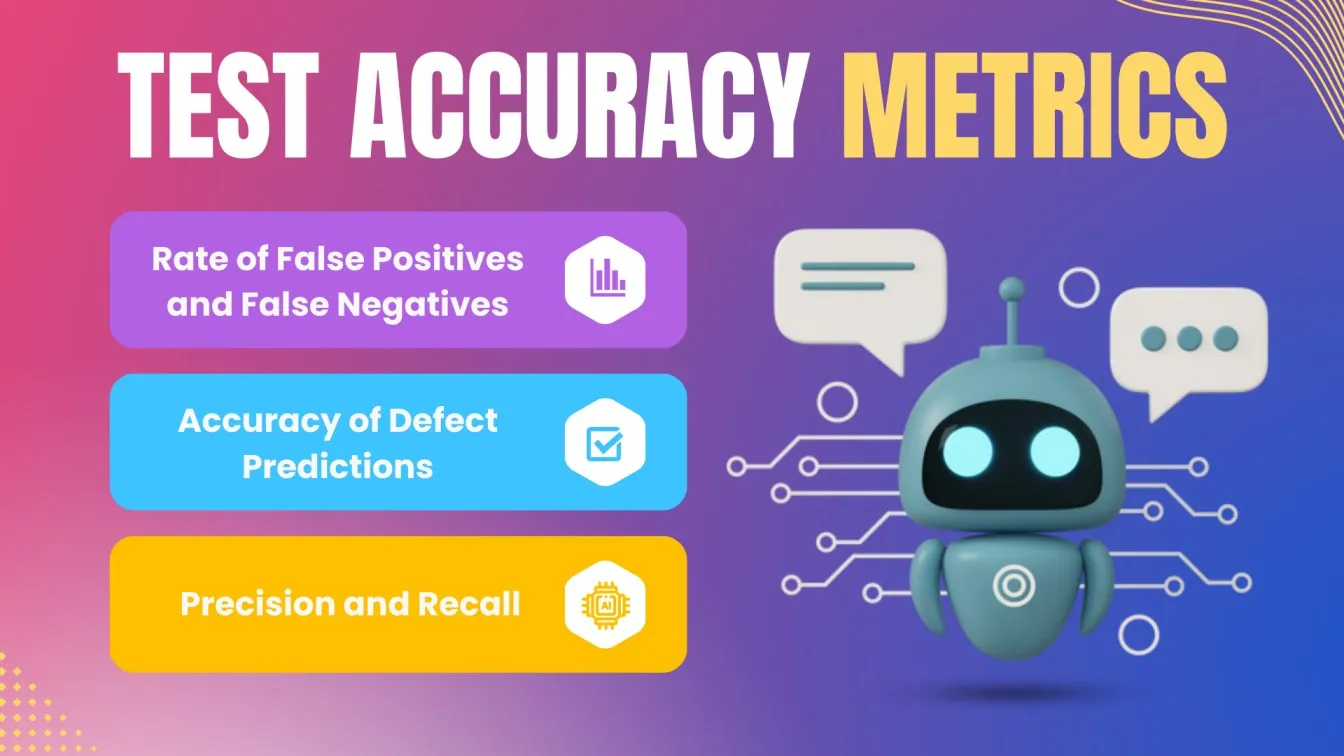
- Rate of False Positives and False Negatives: Analyze the frequency of incorrect test results. False positives are test results that incorrectly indicate a problem, while false negatives fail to identify actual issues.
- Accuracy of Defect Predictions: Evaluate how accurately AI predicts potential defects based on historical data and patterns.
- Precision and Recall: These metrics assess how well AI detects relevant issues (precision) and how many relevant issues it detects (recall). High precision and recall indicate better accuracy.
Conclusion
Embracing AI in quality engineering marks a significant leap towards transforming testing processes for enhanced efficiency and precision. 🤖✨ AI tools offer powerful solutions for automating test generation, maintaining intelligent test scripts, and predicting defects. They improve test coverage by including a wider array of scenarios and increase accuracy by minimizing false positives and negatives. ✅🔍
With AI, you can streamline test execution, reduce manual effort, and uncover critical bugs more swiftly. ⏱️🚀 While challenges such as data quality, model complexity, and integration remain, they can be addressed through robust strategies and tools. 💡🔧 By leveraging AI, you can ensure a more reliable, comprehensive, and efficient QA process, ultimately leading to higher-quality software and a better user experience. 🌟💻
The evolving landscape of quality engineering is being significantly shaped by AI-powered tools and innovative practices. These advanced tools are transforming traditional quality assurance processes by integrating intelligence into routine tasks, allowing quality engineers to focus on complex production processes and testing strategies. With AI-based defect prediction and continuous testing, the quality engineering team can now proactively address software failures and gain valuable insights into product quality. This shift not only improves the efficiency of testing approaches but also reduces production downtime, making the delivery of quality more reliable and consistent.
As digital transformation accelerates, incorporating AI into the field of quality engineering offers a proactive strategy for maintaining high standards in both functional and non-functional testing. AI-powered tools provide insights into quality metrics, support automation strategies, and enhance human testing by supplementing it with self-healing systems and intelligent integrations. Ultimately, the future of quality engineering lies in the seamless collaboration between advanced technology and human oversight, ensuring reliable testing and continuous improvement across software testing processes.
People also asked
👉How can AI improve quality engineering in software development?
AI can enhance quality engineering by automating test generation and execution, predicting defects, and optimizing test coverage. 🤖
👉What are the benefits of using AI in testing processes?
The benefits include improved test coverage, increased accuracy, faster feedback, and reduced manual effort. ✅🚀
👉How does AI enhance efficiency in quality assurance?
AI enhances efficiency by automating repetitive tasks, speeding up test execution, and streamlining test maintenance. ⏱️
👉What role does precision play in AI-driven testing?
Precision ensures that AI-driven testing identifies only relevant issues, reducing false positives and improving result reliability. 🎯
👉Can AI reduce the time spent on manual testing?
Yes, AI can significantly reduce the time spent on manual testing by automating test creation and execution. ⏲️🔧
👉How does AI ensure accuracy in automated testing?
AI ensures accuracy through advanced algorithms that analyze data patterns, predict defects, and refine test cases. 🔍✅
👉What are the future trends in quality engineering with AI?
Future trends include increased use of machine learning for predictive analytics, enhanced integration with CI/CD pipelines, and more sophisticated AI models for test automation. 🌟📈
👉How does AI-powered root cause analysis improve quality engineering practices?
AI-powered root cause analysis helps quality engineers identify the underlying issues behind software failures by analyzing historical defects and user interactions. This proactive strategy improves testing accuracy and efficiency, allowing the quality engineering team to address critical tasks more effectively.
👉How can AI-based defect prediction help reduce production downtime?
AI-based defect prediction identifies potential issues in real production environments by analyzing complex user behavior and characteristics of production systems. By predicting defects before they impact operations, AI helps reduce production downtime and ensures seamless delivery of quality software.



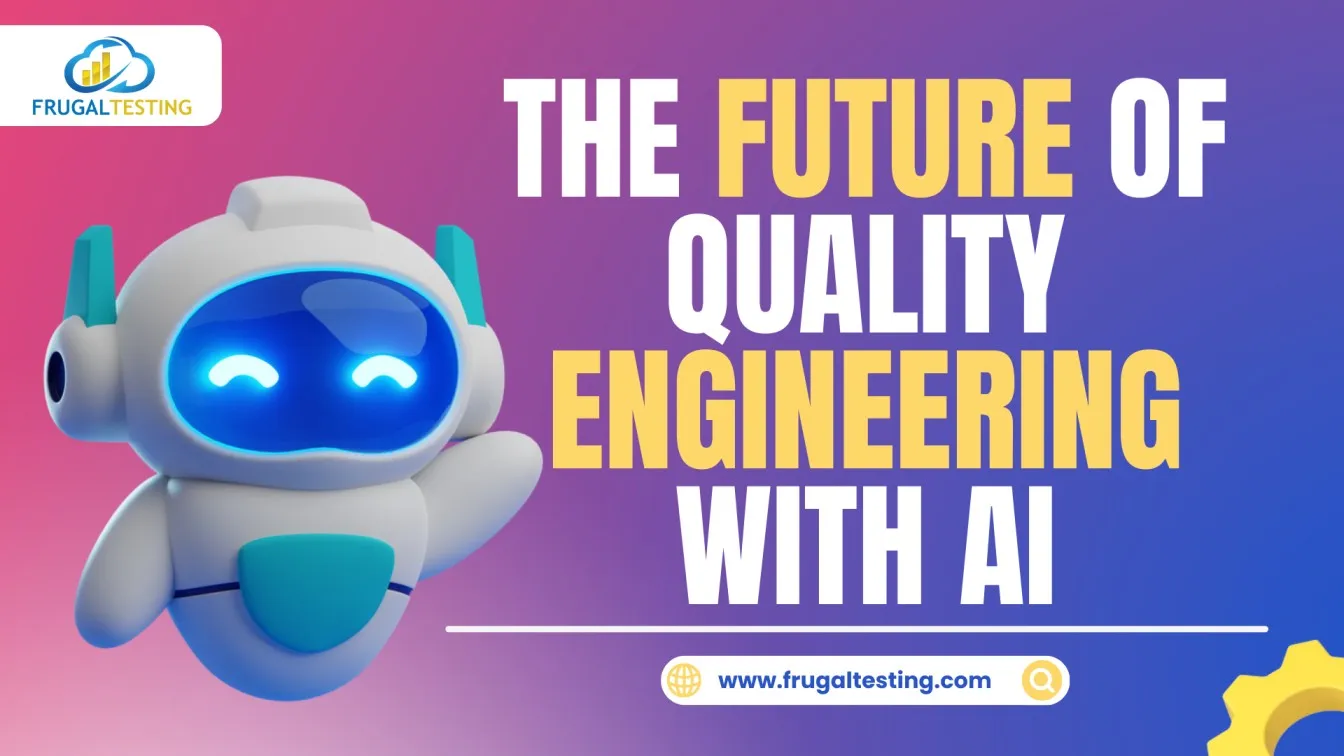

%201.webp)

